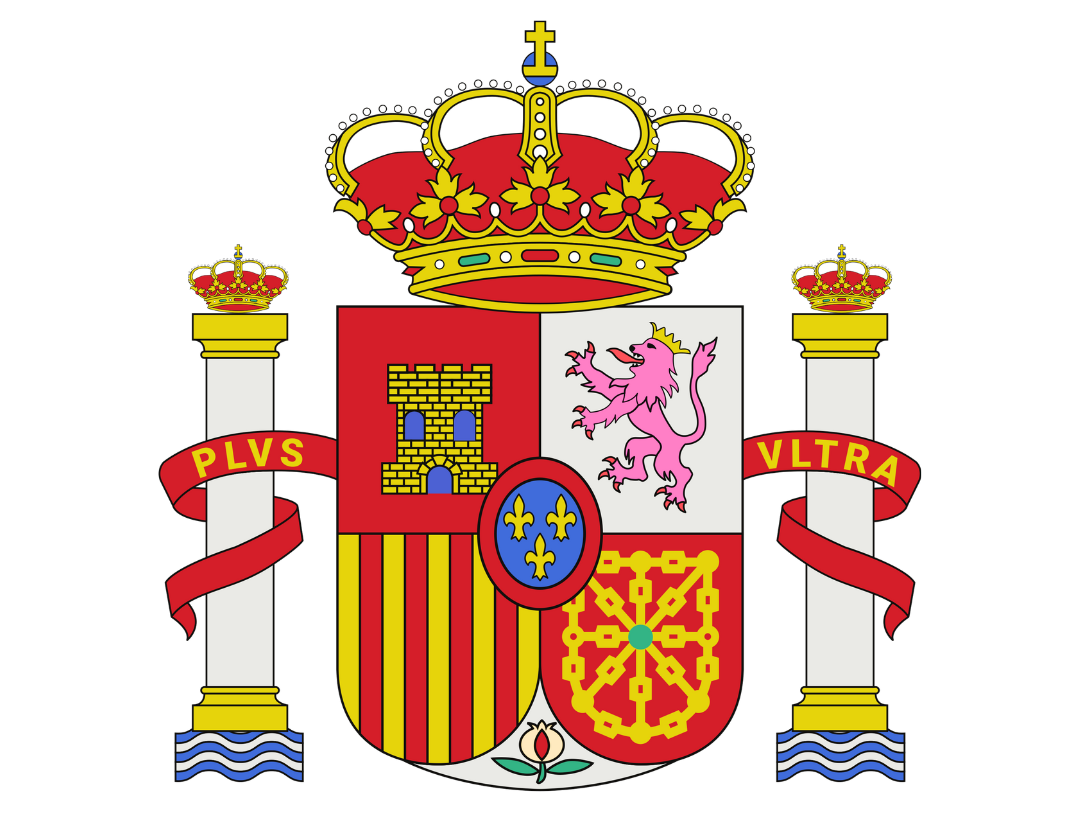Spain's Coat of Arms is one of the main national symbols, present in our flag and our passport cover, for example. But.. what's in it exactly?
As we will analyse below, it contains a mix of:
- Pre-Spain Independent Kingdoms
- Mythology
- Monarchy
Let's go into detail!

What are the Two Columns on the Sides?
This part of the Coat of Arms comes from the 16th Century, when Spain was exploring America. There was a classic myth which stated that there was nothing beyond the end of the Mediterranean. According to the myth, Hercules set two columns flagging the end of the world, with the inscription "Non terrae plus ultra", which means "No Land Beyond" in Latin.
The Spaniards, flexing that they did go beyond the "end of the world" (the columns that flagged the end of the Mediterranean) after they reached America, tweaked this myth and removed the first part of the inscription. Now, it just said "Beyond", or "Plus Ultra" in Latin, instead of "No Land Beyond". The symbol has been kept until present day.
Which Kingdoms are Represented?
In the central section of the Coat of Arms, you can see a tower, a lion, some yellow and red stripes, yellow chains over a red background, and a pomegranate. The yellow spears over a blue background don't represent a kingdom, but the king. So we will analyse it in the following section.

The Lion
Quite self explanatory, this lion represents the Kingdom of León, which means lion in Spanish. This kingdom was located in the North West of the Iberian Peninsula, and its king Pelayo was who initiated the famous Reconquista (process in which the Christians conquered modern-day Spain from the Muslims).
The Tower
This represents the Kingdom of Castile, one of the most prominent Christian kingdoms during the Middle Ages. Castile was a powerful force during the Reconquista, and its name comes from the numerous castles (castillos) built in the region. The unification of Castile and León marked an important step toward the formation of modern Spain.

The Yellow and Red Stripes
These stripes represent the Crown of Aragón, a confederation of territories that included Catalonia, Valencia, and the Balearic Islands. The Crown of Aragón was a maritime powerhouse in the Mediterranean, extending its influence to Sicily, Sardinia, and even parts of Greece. Its flag, known as the "Senyera", is still a key symbol in regions like Catalonia and Aragón today, and it's present in their modern-day flags.

There are multiple legends stating the origin of the red and yellow stripes. Some say that it's the blood of the dragon that St. George (patron of many municipalities in the region) killed, over the yellow lands of the Crown of Aragón.
Others say that the Count of Barcelona was fighting and one of his allies died in the battlefield. He then painted his golden shield with stripes of the blood of his ally, originating the red and yellow stripes.
The Yellow Chains Over a Red Background
This symbolises the Kingdom of Navarre, located in the West Pyrenees region in the north of Spain. According to legend, the chains commemorate the Battle of Las Navas de Tolosa in 1212, where Navarrese forces played a pivotal role in defeating the Almohad Caliphate.


